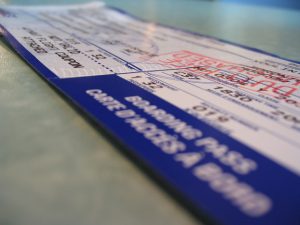As early as the 1990s, prior to the universality of the web, you called your travel agent and she or he looked after everything – your flights, the hotel, the rental car. America Airlines, the Hyatt, Hertz and so forth paid the travel agents to provide their services. But gradually, the landscape altered. The airline companies and hotel chains stopped paying. Travel agents stopped providing their services for “free”. The customer carried the charges, and travel agents ended up being unimportant gamers to all but the rich tourists who didn’t have to stress over expenses.
 Innovation helped in this unavoidable interruption, and eventually helped develop a few of the pricing mayhem we see today. As the web ended up being the very first stop for travel shopping, we began looking for deals through keystroke commands. We stopped speaking with hotel clerks, rental car agents, and airline company appointment agents, and we boasted to our good friends about our inexpensive trips to Lake Como.
Innovation helped in this unavoidable interruption, and eventually helped develop a few of the pricing mayhem we see today. As the web ended up being the very first stop for travel shopping, we began looking for deals through keystroke commands. We stopped speaking with hotel clerks, rental car agents, and airline company appointment agents, and we boasted to our good friends about our inexpensive trips to Lake Como.
Last August, Andrea Giacobbe went to Skyscanner, a European metasearch engine like Expedia and Travelocity that scans several travel sites and locations for the most affordable fare. Giacobbe, a 52-year-old management consultant, was seeking to reserve a flight from New York City to Genoa, Italy – a journey he’s made various times for family visits. He’d constantly count on Skyscanner for a discount rate. This time, the most inexpensive fare wasn’t that inexpensive: It was for an Alitalia flight that made 2 stops, through Milan and Rome, for $2,050. Shocked at the high quote, he chose to call Alitalia. Right away, the airline company checked its cloud management system and used a $1,550 flight with just one drop in Rome. It was more affordable. It would arrive quicker. They even offered him an affordable vehicle rental.
“It blew my mind,” recalled Giacobbe. He had not called Alitalia straight in years. He was accustomed to counting on Skyscanner for the very best offer. Giacobbe’s experience is becoming more common. Over the previous years, the standard knowledge has been that travelling the web would yield the very best costs in the travel, hotel, and vehicle rental areas. There’s been a tidal shift in the travel market, to a point where the majority of us use aggregators to reserve our journeys. Who troubles speaking to a person – a travel agent? You’re simply going to be stuck in a long options queue.
The majority of us depend on metasearch engines, like Priceline, Expedia, or Travelocity, which normally utilize lots (in some cases as many as 200) of online travel agents, called OTAs, and aggregators to discover the very best offers. (A metasearch engine and an aggregator are interchangeable terms – they both search other websites and assemble information under one roofing system. An OTA is a real travel bureau that really does the reservation and is the only site accountable for whatever you purchase through them.) We depend on these websites since we presume they have the secret sauce – the most effective online search engine, modified by super star developers and software testers equipped with the most advanced algorithms – to assist us to the least expensive alternatives. With a single search, you can feel ensured that you are paying an all-time low cost.
 Gradually, nevertheless, the convention has actually turned. As competitors amongst the websites warmed up, the hard-to-believe inexpensive fares needed some filtering. A too-good-to-be-true fare ($99 to Europe from California) generally included a catch (the $400, indirect, ticket house). And as business models that on which these aggregators rely on are getting tighter, the offers are worsening. How can you be sure you’re getting the most affordable quote? The brief answer is, you can’t.
Gradually, nevertheless, the convention has actually turned. As competitors amongst the websites warmed up, the hard-to-believe inexpensive fares needed some filtering. A too-good-to-be-true fare ($99 to Europe from California) generally included a catch (the $400, indirect, ticket house). And as business models that on which these aggregators rely on are getting tighter, the offers are worsening. How can you be sure you’re getting the most affordable quote? The brief answer is, you can’t.
While reporting this piece I spoke with a number of software engineers testing managed services, executives of hotel chains, along with academics and scientists who have actually invested a significant amount of time and effort digging into the question. Their conclusion is that the market remains in flux, in which great deals – for hotels, flights, and car rentals – are typically mostly illusory. “Hotels are not providing the aggregators as many bargains as they did in the past,” a previous software engineer who used to work for Priceline informed me. (He didn’t want his name used since he still is looking to work in the market.) “You might as well call Sheraton’s front desk.”.
And all the best finding the delinquent parties: The variety of gamers behind each deal has actually ratcheted up. For each possible offer, there are most likely to be several aggregators in the food cycle, with each website taking a cut and eventually increasing the last expense. My ex-Priceline source informed me that aggregators rationalise cost variations by pointing out the ups and downs of supply and demand in their business management system, which differs considerably in seasonal resort locations. However in truth, it’s a breakdown in the system. Just as airline companies and hotels started cutting travel agent commissions more than twenty years earlier, now history is repeating itself. “The airline companies do not want to pay the aggregators any longer,” he informed me.
Which implies individuals who are paying them are us.



 Innovation helped in this unavoidable interruption, and eventually helped develop a few of the pricing mayhem we see today. As the web ended up being the very first stop for travel shopping, we began looking for deals through keystroke commands. We stopped speaking with hotel clerks, rental car agents, and airline company appointment agents, and we boasted to our good friends about our inexpensive trips to Lake Como.
Innovation helped in this unavoidable interruption, and eventually helped develop a few of the pricing mayhem we see today. As the web ended up being the very first stop for travel shopping, we began looking for deals through keystroke commands. We stopped speaking with hotel clerks, rental car agents, and airline company appointment agents, and we boasted to our good friends about our inexpensive trips to Lake Como. Gradually, nevertheless, the convention has actually turned. As competitors amongst the websites warmed up, the hard-to-believe inexpensive fares needed some filtering. A too-good-to-be-true fare ($99 to Europe from California) generally included a catch (the $400, indirect, ticket house). And as
Gradually, nevertheless, the convention has actually turned. As competitors amongst the websites warmed up, the hard-to-believe inexpensive fares needed some filtering. A too-good-to-be-true fare ($99 to Europe from California) generally included a catch (the $400, indirect, ticket house). And as